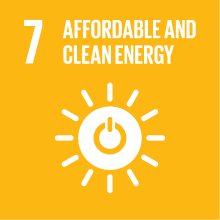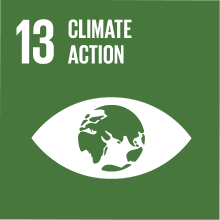MOLECULAR SPECTROSCOPY
- Academic year
- 2023/2024 Syllabus of previous years
- Official course title
- SPETTROSCOPIA MOLECOLARE
- Course code
- CM0371 (AF:374573 AR:211878)
- Teaching language
- Italian
- Modality
- On campus classes
- ECTS credits
- 6
- Degree level
- Master's Degree Programme (DM270)
- Academic Discipline
- CHIM/02
- Period
- 1st Semester
- Course year
- 2
- Moodle
- Go to Moodle page
Contribution of the course to the overall degree programme goals
Within this framework, the course will provide a deep and solid understanding of both the theoretical and the specialist concepts of several spectroscopic techniques belonging to different regions of the electromagnetic spectrum also providing a detailed discussion on some of their modern applications in the fields of chemistry, biochemistry and biology.
Expected learning outcomes
- have a solid Knowledge and deep understanding of the correct spectroscopic formalism to be used, and of the theoretical concepts of both advanced optical and magnetic spectroscopies (the pulse sequences formalism and the corresponding analysis ), and some of their modern applications (dynamics of chemical processes, studies on atmospheric pollutants in real-time, investigations on surfaces and interphases, adsorption processes, structural determinations and analysis of processes also for biochemical and biological applications);
- be able to apply the correct formalism for analyzing the different spectroscopic phenomena (and their corresponding data in their spectral range). In details, the students will be able to apply physical and quantum-chemical concepts to optical spectroscopies as well as to magnetic spectroscopies (describing the experiment on the basis of the pulse sequences as defined by IUPAC).
- be able to discuss the corresponding spectroscopic techniques and interdisciplinary applications (using all the theoretical concepts treated during the course) for investigating chemical processes, atmospheric pollutants (in real-time), surfaces and interphases, adsorption processes, structural determinations and analysis of processes also for biochemical and biological applications;
- be able also to judge and compare the performances, the issues and the applicability of the different spectroscopic techniques in view of the chemical problems to be solved and/or the researches to be carried out;
- be able to communicate the knowledge learned, the formalism employed, and the results of its application using appropriate terminology;
- be able to learn advanced topics by reading scientific articles.
Pre-requirements
Besides, the students should know (and be able to apply) the basic concepts of quantum chemistry (to have attained the educational objectives of the corresponding course, possibly but not necessarily having passed the corresponding exam).
Contents
Eigenvalues and eigenfunctions. Energetic levels and transitions. Energy diagrams. Boltzmann statistics. Induced absorption, induced and spontaneous emission, and their corresponding Einstein coefficients. Electric and magnetic transition moments. General and specific selection rules. Classification of spectroscopies: optical and magnetic.
INFRARED AND RAMAN SPECTROSCOPIES
Infrared (IR) spectroscopy: harmonic treatment, normal modes. Discussion of some relevant experimental techniques and their application for solving chemical problems, analysis on atmospheric pollutants, and for the studies of surfaces and adsorption processes, orientational analysis of interfacial molecular groups: Cavity RingDown Spectroscopy (CRDS), Attenuated Total Reflection (ATR) IR spectroscopy, Surface Enhanced InfraRed Absorption Spectroscopy (SEIRAS), Reflection-Absorption IR Spectroscopy (RAIRS), and Diffuse Reflectance IR Spectroscopy (DRIFT). Basic concepts on Raman spectroscopy, principles and applications. SERS and TERS Techniques. Examples and exercises on the different topics.
MAGNETIC SPECTROSCOPIES (NMR)
The nuclear spin and its properties. Bloch phenomenological equations and their solutions in both the laboratory (fixed) axes and the rotating axes. Relaxation processes: spin-lattice and spin-spin mechanisms. Pulses (Hard and Soft) in modern FT-NMR spectroscopy. Experimental measurements of spin-lattice and spin-spin relaxation processes. Description of a general bi-dimensional experiment. Correlation SpectroscopY. Description of the Double Quantum Filtered COSY (DQF-COSY) experiment. Description of HSQC/HMQC, HMBC, DEPT, PGSE, LED/BPLED, DOSY-COSY, MAD, SCALPEL, and PSYCHE. Examples and applications.
Referral texts
For the optical spectroscopies, the textbook mainly used in the course is
J. M. Hollas, “Modern Spectroscopy”, 4th edition, Wiley, 2003.
For the magnetic spectroscopies, the textbook mainly used in the course is
N. E. Jacobsen “NMR SPECTROSCOPY EXPLAINED: Simplified Theory, Applications and Examples for Organic Chemistry and Structural Biology”, John Wiley & Sons, 2007.
Assessment methods
It consists in a series of questions about the different topics covered in the course; the student will be asked also to apply the different formalisms for describing a given spectroscopic experiment, and to justify the corresponding outcomes.
Besides, a short presentation (by slides in ppt format, 8 minutes max) on one application of spectroscopy for solving a chemical problem
Type of exam
Teaching methods
Further information
Accommodation and support services for students with disabilities and students with specific learning impairments:
Ca’ Foscari abides by Italian Law (Law 17/1999; Law 170/2010) regarding support services and accommodation available to students with disabilities. This includes students with mobility, visual, hearing and other disabilities (Law 17/1999), and specific learning impairments (Law 170/2010). In the case of disability or impairment that requires accommodations (i.e., alternate testing, readers, note takers or interpreters) please contact the Disability and Accessibility Offices in Student Services: disabilita@unive.it.
STRUCTURE AND CONTENT OF THE COURSE COULD CHANGE AS A RESULT OF THE COVID-19 EPIDEMIC.
2030 Agenda for Sustainable Development Goals
This subject deals with topics related to the macro-area "Climate change and energy" and contributes to the achievement of one or more goals of U. N. Agenda for Sustainable Development


